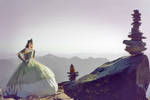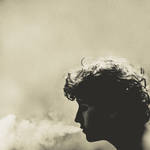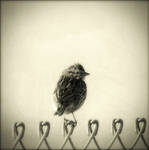Lately I've seen quite a few photos that have potential, but need some work. Composition is one of the most important parts to taking any photo (and making any piece of art really) and so I thought I'd share a few basic rules and tips. The word composition simply means 'putting together' and so, with any piece of art, it's how the piece is put together. With a bit of practice while keeping these tips in mind, you can create a more impacting, pleasing to the eye piece of work that will draw the viewer in and keep them interesting.
You could crop your images afterwards when you get them onto the computer, but it'd be lovely to have a great image right off the boot, right? By keeping in mind the things below, you'll be well on your way to taking better photos. And don't forget, it's always better to know the rules before you start break them

A few tips before we start;
- Look around using the viewfinder every time you take a picture.
- Look at each element and how it impacts the overall composition.
- Become familiar with your camera. Learn how it works, play around with settings and really get to know how each setting changes the overall image.
- Experiment and practice. Experiment and practice. Experiment and practice.
- Study other pieces of art; photography, paintings, films; look at their composition. You'll soon develop a better understanding of composition.
Rule of Thirds
image from Wikipedia
This is the most commonly known rule when it comes to creating any piece of art. The idea is to place a grid over the photos (you can do this mentally, or some cameras have a thirds setting that will bring the grid up for you) and then place subjects of the photo along the lines and where the lines cross. As you can see in the image above, placing the horizon on a line and other subjects of the image where the lines cross creates a pleasing to the eye composition. If you're struggling with composing a photo, this is always a good rule to refer back to.

:thumb185494781:
Rule of Odds
The rule of odds states that if you frame a subject with an even number surrounding objects, it will become more comforting to the eye, therefore an odd number of objects in an image will make the piece more compositionally pleasing. An even number of objects can create a symmetry in your image which can seem unnatural and too forced, but by using at least three in you photo, you can achieve a more informal, natural composition.
Rule of Space
The rule of space is used by artists to create a feeling of moving and/or fluidity. It is also supposed to create a contextual bubble in the viewers mind. This is achieved by leaving some negative space in the direction of the eyes of your subject or when photographing something moving, adding space in front of the subject, rather than behind.
Simplification
There are many ways to achieve simplicity in photography. The easiest, and most obvious way, is to photograph your subject against a neutral background such as the sky. Make sure that all clutter is removed so that there is nothing to distract the viewers eye and brightening your subject by altering your camera settings (larger aperture, longer shutter, higher ISO) can also eliminate some background clutter as the eye is drawn to brighter areas, as well as lines and colour. You could also throw the background out of focus (we'll go more into this below), or if photographing water, using a longer shutter to smooth the water out. These will all ensure that the viewer is drawn to the main subject, rather than the surrounding.
:bigthumb349623502:
Framing
Framing has two uses - making the image more pleasing to the eye and also making sure the viewer is drawn to the subject you want them to be. The world is full of natural framing products - trees, archways, bridges, etc. The frame ensures the subject of your photo is isolated and doesn't go unnoticed, drawing your eye to the main point of interest.
Limiting Focus
Limiting focus ensures that your subject is automatically where the viewers eye is drawn. By throwing the background out of focus, you will minimize distraction and isolate your subject. To achieve this look, you will need to use a wide aperture (a lower f number) to limit the depth of field. If you don't own a lens that will open up wide enough, you can also achieve the same look by using a longer focal length (zooming in). Both these methods will give a shallow depth of field and will ensure that only your subject is in focus.
Depth
Because photography is very much two dimensional, composing your image to create a sense of depth can be an important thing, especially in landscape photography. You can achieve this by including images in the foreground while the land runs through the middle ground and onto the background. You can also overlap objects to create a sense of depth where there isn't any already.
Balance
There are two main types of balance we'll be looking at; Symmetrical Balance (Formal Balance) and Asymmetrical Balance (Informal Balance).
Symmetrical balance is when one or more similar subjects are composed with a symmetry to the image. The easiest way is to have a central composition (completely breaking the rule of thirds) and try to get them as symmetrical as possible. This type of balance can be tricky to master as if not done right, it can look a little boring. Regardless, give it a go to challenge yourself.
:thumb298197446:

Asymmetrical is more difficult, but much more interesting than symmetrical balance. The subjects of the image are usually different size, shape, different tone, different placement and different weight but are composed in a way in which they look balanced despite their notable differences.
 :thumb314602908:
:thumb314602908:
I hope you found some of this useful and remember, these are just guidelines to get you started - but sometimes, they're meant to be broken. Don't be afraid to mix and match or just ignore them all completely, but if you're struggling, they're always handy to refer back to. If you do find these useful, I'd love to see some of your results using some of the tips.
Do you have any questions about photography? Is there something in particular you'd like to know about? Drop me a note and I'll make it into a new article which will hopefully answer any questions you have!























